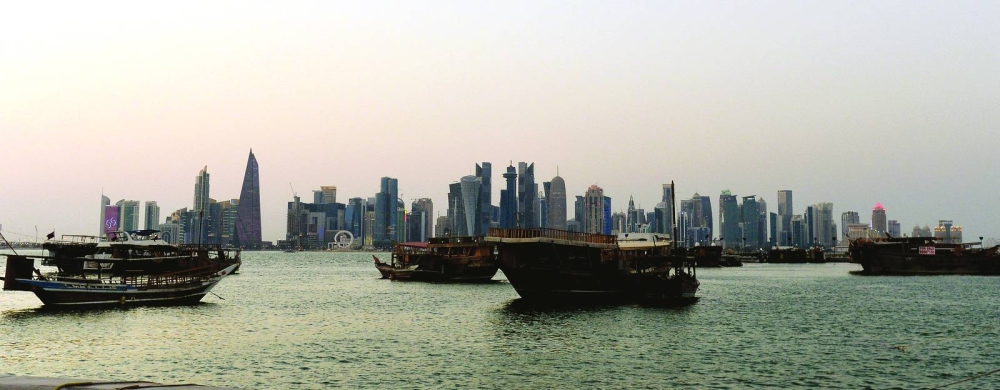Qatar's fiscal breakeven oil price is expected to decline to $50 a barrel in 2027 from $64 this year, with the first phase of the North Field expansion to start supporting fiscal revenue fully from 2026 and the second phase in 2027, according to Fitch, a global credit rating agency.
"This reflects our expectation that new spending commitments will amount to a modest fraction of the new liquefied natural gas (LNG) revenue. Qatar's spending plans on economic diversification are more modest than regional peers," said Fitch after upgrading Doha's long-term foreign-currency issuer default rating (IDR) to 'AA' from 'AA-' with "stable" outlook.
The upgrade reflects Fitch's greater confidence that debt-to-GDP (gross domestic product) will remain in line with or below the 'AA' peer median after falling sharply in recent years, while Qatar's external balance sheet will strengthen from an already strong level.
Qatar's 'AA' ratings are supported by large sovereign net foreign assets (SNFA), one of the world's highest ratios of GDP per capita and a flexible public finance structure.
The country is also likely to retain budget surpluses until the 2030s a result of the North Field expansion, it said, adding QatarEnergy plans to expand LNG production capacity from 77mn tonnes per year (Mtpa) to 110Mtpa by end-2025, 126 Mtpa by end-2027 and announced a further expansion to 142Mtpa by end-2030.
"We assume that QatarEnergy will cover $12.5bn of core project costs out of its 2021 bond issuance and a similar amount from its cash flow, spread until 2028, on top of contributions by partners," the rating agency said.
Highlighting that funding plans for the 2030 phase will depend on hydrocarbon prices at that time; it said North Field projects will support both hydrocarbon and non-hydrocarbon growth over 2025-30.
QatarEnergy will also cover a significant share of the costs of the ancillary projects associated with the expansion, including downstream plants that will brings its petrochemical capacity to over 15Mtpa.
QatarEnergy owns 70% of the Golden Pass LNG project (16Mtpa) in Texas, which will start production in 2024, bringing new revenue to the budget via the dividends of hydrocarbons bellwether.
Projecting debt/GDP to fall to about 47% of GDP in 2024 and 45% in 2025, from a peak of 85% in 2020, the rating agency said this reflects our expectation that the government will continue to repay maturing external debt in 2024 ($4.8bn) but is likely to refinance its $2bn 2025 maturity in 2024, and will gradually pay down some of its domestic debt.
"The subsequent debt path will depend on how the government chooses to deploy its fiscal surpluses," Fitch said.
The persistence of a high global bond yield environment could encourage Qatar to continue to allocate a share of its surpluses to deleveraging beyond 2025, although baseline assumes that external debt is rolled over, it said.
"Our debt metrics include government overdrafts with local banks (QR48bn at end-2023), which the government does not include in its headline figure," it said.


